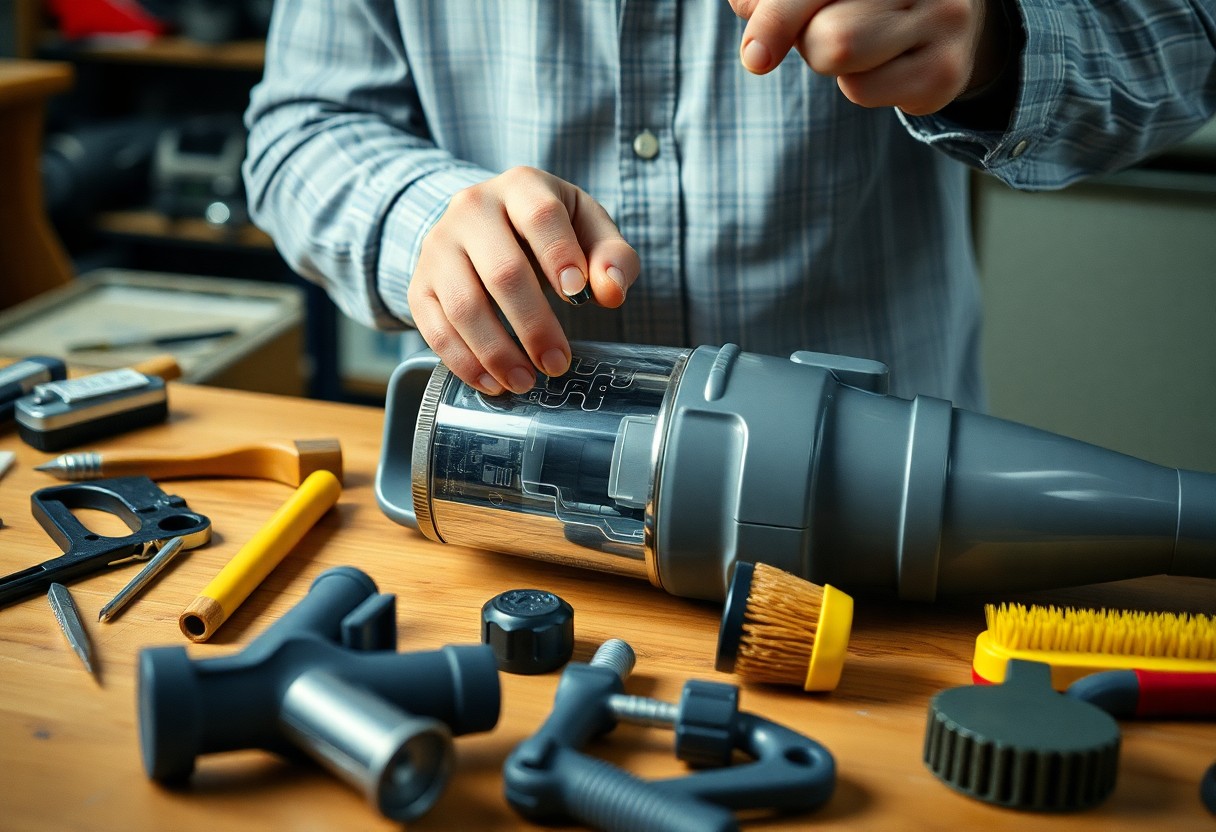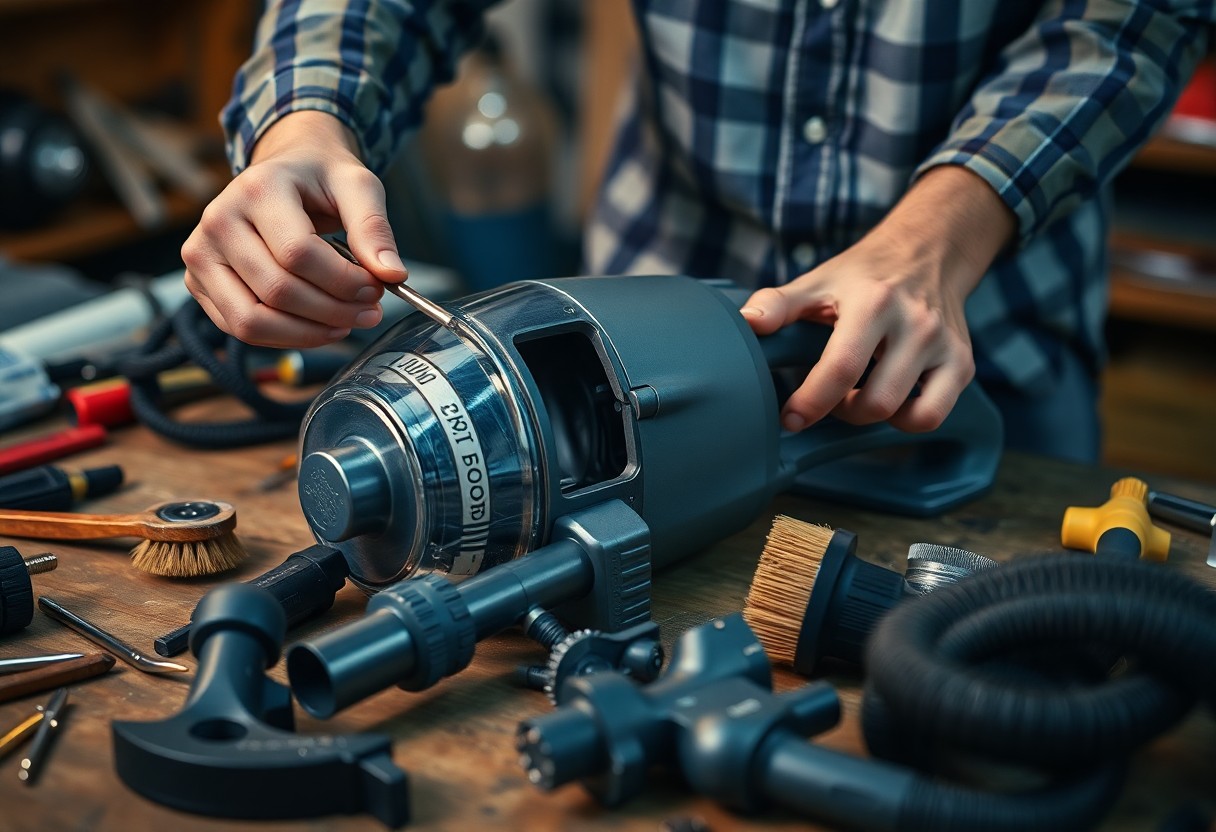Just like any other appliance, your vacuum can encounter a variety of issues that hinder its performance. Whether it’s loss of suction, a tangled brush roll, or strange noises, dealing with these common vacuum problems can be frustrating. In this DIY guide, we’ll explore five typical vacuum issues and provide you with easy-to-follow solutions to get your cleaning companion back in top shape. With a bit of troubleshooting, you can restore your vacuum’s efficiency, making your cleaning routine smoother and more effective.
Contents
Understanding Common Vacuum Problems
While vacuums are crucial for maintaining a clean environment, they can encounter several issues over time. Understanding these common problems can empower you to troubleshoot effectively and maintain your vacuum’s performance, ensuring it continues to serve its purpose efficiently. From loss of suction to electrical malfunctions, identifying the source of these problems early can save you time and money on repairs or replacements.
Loss of Suction
You may notice that your vacuum struggles to pick up dirt and debris, leading to frustration during cleaning sessions. This loss of suction can result from multiple factors, including clogged filters, full dust bins, or even blocked hoses. Addressing these issues promptly can restore your vacuum’s efficiency and effectiveness.
Brush Roll Issues
Suction problems can also stem from brush roll issues. If the brush roll is tangled with hair or debris, it can hinder its ability to agitate dirt effectively. Regularly cleaning the brush roll ensures optimal performance and allows your vacuum to do its job more effectively.
For instance, detangling hair or removing stuck debris from the brush roll can significantly improve suction power. Additionally, you should regularly check for wear and tear on the bristles; worn-out bristles may not scrub the floor effectively, leading to diminished cleaning performance.
Blockages and Clogs
One common vacuum issue arises from blockages and clogs in the hose or filters. These impediments can severely limit airflow, directly affecting your vacuum’s overall performance. Conducting regular inspections ensures any debris is removed, allowing your vacuum to operate at its best.
Another point to consider is that blockages can form in unlikely areas, such as the attachments or the vacuum’s internal tubing. Clearing these areas can involve disassembling parts of the vacuum, so it’s wise to consult your user manual for specific instructions to ensure proper reassembly.
Electrical Failures
Blockages can also lead to electrical failures in your vacuum. If it stops working entirely, checking the power cord and plug is crucial, as fraying or damage can prevent your vacuum from drawing power. Additionally, inspecting any built-in circuit breakers can help restore functionality.
Understanding your vacuum’s electrical system can help you diagnose these issues. Regularly checking the condition of cords and connections can prevent unexpected failures, allowing your vacuum to maintain reliable operation in your cleaning routine.
Strange Noises
Clearly, encountering strange noises when using your vacuum often signals an underlying issue. From rattling to high-pitched whines, these sounds might indicate loose parts, motor problems, or persistent blockages that need to be addressed promptly. Identifying the source can help you troubleshoot effectively and maintain your vacuum’s longevity.
Electrical components within the vacuum can also contribute to these noises. For example, a malfunctioning motor may create unusual sounds that indicate it’s operating inefficiently or may be on the brink of failure. It’s wise to address any odd noises immediately to prevent further damage.

How to Identify Vacuum Problems
Some common issues with your vacuum can often be diagnosed through careful observation and testing. By being attentive to unusual sounds, decreased suction power, or visible damage, you can pinpoint the problem more effectively. Understanding how to identify these vacuum problems will help you take the necessary steps towards a successful DIY repair.
Visual Inspections
You should start by conducting a thorough visual inspection of your vacuum cleaner. Check for any visible damage, such as cracks or breaks in the casing, worn-out brushes, or lodged debris in the hoses and filters. Cleaning and addressing these issues can often restore your vacuum’s functionality.
Performance Evaluations
While visual inspections are vital, evaluating your vacuum’s performance is equally important. Turn on the vacuum and listen for any unusual noises or reduced suction. Assess how it picks up dirt and debris on different surfaces. A decline in suction power can indicate a clogged filter or blockage in the hose.
Inspections of performance give you valuable insights into the overall functionality of your vacuum. If your vacuum is making excessive noise or struggling to pick up dirt, you may need to look deeper into possible blockages in the hose or check if the filters require cleaning or replacement. By evaluating both the way your vacuum operates and its physical condition, you can effectively diagnose and remedy the issues at hand.
How to Fix Vacuum Problems
For every vacuum issue you encounter, there’s usually a simple fix that you can tackle yourself. Whether it’s cleaning filters, unclogging hoses, or replacing worn parts, identifying the problem is the first step. This guide will walk you through common vacuum problems and offer practical solutions to help restore your machine’s efficiency.
Cleaning Filters and Dustbins
On a regular basis, you should check and clean your vacuum’s filters and dustbins. Clogged filters can hinder your vacuum’s performance and create more work for you. A simple rinse under running water followed by thorough drying can enhance airflow and suction power.
Unclogging Hoses and Attachments
Attachments play a vital role in vacuum performance, and clogs can easily develop in hoses and nozzles. Inspect them for visible debris, and use a long, flexible object to clear stubborn obstructions. Regular checks can prevent buildup and keep your vacuum running smoothly.
Dustbins can fill up quickly and cause blockages if not emptied frequently. Always dispose of dust and debris after each use and make it a habit to inspect for any items stuck in the hose or attachment areas. Keeping these components clear will enhance the suction and efficiency of your vacuum cleaner.
Replacing Brush Rolls and Belts
While your vacuum can lose its effectiveness if the brush rolls or belts are worn out, replacing them is usually straightforward. Check these parts regularly, as a frayed belt or a clogged brush can prevent proper cleaning. Follow your vacuum’s instructions for easy replacement steps.
Another key component is to monitor the brush rolls for tangled hair or debris. These can inhibit performance, so cleaning them frequently and maintaining a healthy cycle will ensure optimum cleaning power. It’s often a simple check that makes a big difference in your vacuum’s performance.
Addressing Electrical Issues
Issues with your vacuum’s power source often require immediate attention. First, check for any loose cords or damaged plugs that might interrupt power. Ensure that the outlet is functioning properly and replace any blown fuses as needed.
Plus, consider inspecting the vacuum’s internal wiring if problems persist, as exposed wires can lead to safety hazards. If you’re unsure, consulting a professional can help ensure your vacuum operates safely and effectively for years to come.
Tips for Vacuum Maintenance
Not maintaining your vacuum cleaner can lead to diminished performance and shorten its lifespan. To keep your vacuum running smoothly, follow these tips:
- Clean or replace filters regularly
- Check and clear clogs in the hose and brushes
- Inspect drive belts for wear and tear
- Keep your vacuum’s exterior clean
- Store it properly after each use
This proactive approach will ensure your vacuum remains efficient and effective.
Regular Cleaning Schedule
While it may be tempting to overlook scheduled maintenance, establishing a regular cleaning routine for your vacuum can significantly enhance its longevity and performance. Aim to check and clean your vacuum on a monthly basis or more frequently if you have pets or high foot traffic in your home. This will help maintain its suction power and keep your living space clean.
Proper Storage Techniques
With careful attention to how you store your vacuum cleaner, you can prevent potential damage and maintain its functionality. Make sure to unplug your vacuum after use and keep it in a dry, cool place, away from extreme temperatures. If your vacuum has a detachable hose, store it coiled to avoid kinks that can restrict airflow.
Storage also plays a key role in your vacuum’s upkeep. Storing your vacuum upright in a closet or a dedicated space not only keeps it safe from bumps or falls but also allows for easy access whenever you need it. If your vacuum has attachments, consider using a storage caddy to keep them organized and easily retrievable. By prioritizing proper storage, you ensure that your vacuum is always ready for action when you need it.

Factors Influencing Vacuum Performance
Despite your vacuum’s capabilities, various factors can affect its performance. These include:
- Type of flooring in your space
- The presence of pet hair and allergens
- Condition of filters and bags
- Vacuum’s power and suction settings
Knowing how these elements interplay can help you maximize your vacuum’s efficiency. For more insights on potential issues, check out Most Common Vacuum Leaks (Diagnosing P0171 & P0174).
Type of Flooring
On various surfaces, your vacuum may perform differently. Carpets require more powerful suction to pull dirt and debris, whereas hard floors typically need less power. Understanding your flooring type will help you choose the appropriate vacuum settings for optimal results.
Pet Hair and Allergens
Hair from pets can reduce your vacuum’s effectiveness over time. Allergens such as dust mites or pollen can also affect performance.
Influencing your vacuum’s ability to clean efficiently, pet hair can clog filters and brushes, causing reduced airflow and suction. Regularly cleaning your vacuum and utilizing specialized attachments can help tackle stubborn pet hair. Additionally, maintaining an allergen-free environment may require frequent vacuuming and using HEPA filters to capture fine particles, ensuring your living space remains clean and healthy.
Frequently Asked Questions
Once again, if you find yourself facing vacuum troubles, you’re not alone. Many people encounter similar issues, and it’s helpful to know some common questions and answers. You might wonder why your vacuum isn’t picking up dirt effectively or how often you should change the filters. It’s also common to ask about the best way to maintain your vacuum to extend its lifespan. In this section, you’ll discover answers to these frequent inquiries, equipping you with the knowledge to keep your vacuum in optimal working condition.
Conclusion
Considering all points discussed, you can effectively troubleshoot and resolve the five common vacuum problems. By understanding how to identify issues such as reduced suction, clogs, and motor problems, you can maintain your vacuum in optimal condition. Regular maintenance and simple DIY fixes not only save you money but also extend the longevity of your equipment. Now that you are equipped with these insights, you can confidently tackle any vacuum issues that arise in the future.

Leave a Reply